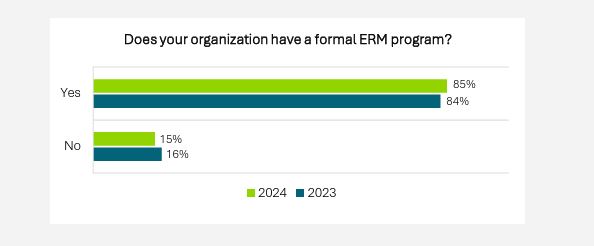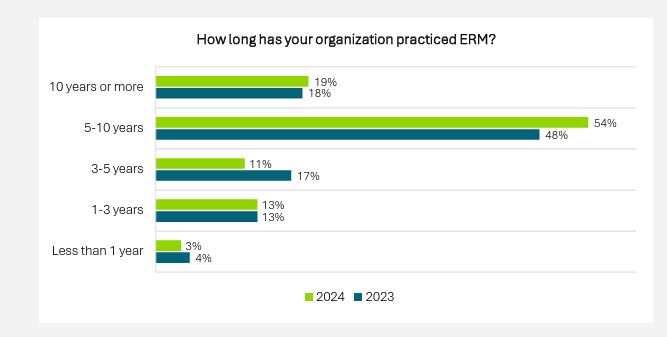Politics
OMB revamping A-123, removing many enterprise risk concepts

The Office of Management and Budget is de-emphasizing enterprise risk management at a time when experts say this type of holistic approach is needed the most.
As part of its effort to rewrite Circular A-123, a draft copy of the document, obtained by Federal News Network, shows OMB has removed any mention of enterprise risk management, including section two of the current circular that specifically calls for establishing an ERM program and identifying current and residual risks and how to mitigate those potential or real challenges.
The draft Circular A-123 instead combines certain concepts of ERM back into the sections focused on internal controls and maintains some aspects of this enterprise approach, like the requirement for agencies to name a chief risk officer.
“What we have seen in nearly 10 years of ERM being a part of A-123 is agencies have been able to expand the conversation around risk management, especially around the C-suite table. They are able to talk about the risks that are pertinent to specific organizations that otherwise wouldn’t have been exchanged in these environments,” said Karen Hardy, the president of the Association for Federal Risk Management (AFERM). “The mention and acknowledgement of certain aspects of risk management is important. If not, it’s not top of mind and becomes a second thought.”
Hardy and other experts say it’s more important than ever for agencies to manage risk from all perspectives, operationally, cyber, reputational, financial and strategic, and that it’s embedded across the entire agency.
“ERM provides a way to look across the entire organization and look at different risks that often only get viewed in siloes. If you can look at them holistically and how they would impact the agency, agencies can address the most critical risks to their missions and put in place a method to treat those risks,” said one government official involved in ERM. “By putting risk back into internal controls, it’s an entirely different approach. You look at processes and operations, and you are making sure things are working properly. You are addressing those specific risks, but you are not getting a view from the top.”
Last update was in 2016
The official said OMB’s draft A-123 update pushes ERM backwards to being something that is done in conjunction with internal controls, which usually agencies worry about after they’ve figured out their risks.
“It misses the whole point of using ERM as a means by which agency leadership can understand the most critical risks to their agency. They also can drive better decisions by understanding the bigger picture, and ideally get ahead of something that turns into the crisis,” the official said.
An email to OMB seeking comment on its plans to update A-123 wasn’t returned.
OMB updated A-123 in 2016 to include enterprise risk management concepts. In that update, OMB outlined a flexible framework for how each agency, bureau and component can manage risk. In the update, OMB told agencies to focus more on ERM and less on internal controls to manage risk because internal more prescriptive, while ERM lets managers decide what areas to focus on and address broad-based real or potential risks.
OMB had started another update to A-123 in 2024 to focus on improper payments. But it didn’t complete it before the end of the Biden administration.
Since OMB updated A-123, the use of enterprise risk management has grown significantly across government and has become a standard across the private sector.
The 2024 survey from the Association of Federal Enterprise Risk Management and Guidehouse shows that 85% of all respondents, who came from 48 federal organizations, including 15 cabinet agencies, had a formal ERM program. That is slightly up from 2023. Of those with formal programs, 63% have had a program for at least five years.
“Larger agencies responding they have a formal ERM program are up slightly (86%) from 2023 (83%) but are still below the historical high in 2022 of 92%,” the survey stated.
Source: 2024 survey of federal enterprise risk management by AFERM and Guidehouse.
 Source: 2024 survey of federal enterprise risk management by AFERM and Guidehouse.
Source: 2024 survey of federal enterprise risk management by AFERM and Guidehouse.
It’s not just in the public sector where ERM has grown. Experts say this is a leading industry practice, too.
An October 2024 report by American Institute of CPAs (AICPA) & Chartered Institute of Management Accountants (CIMA) and North Carolina State University’s Enterprise Risk Management (ERM) Initiative found 47% of respondent organizations globally appointed a single individual, such as a chief risk officer or equivalent, to lead the risk management function. The survey also found 47% of organizations describe their ERM process as a process that is “mostly” to “extensively” systematic, robust and repeatable with regular reporting of top risk exposures to the board.
Folding ERM into internal controls
OMB is not getting rid of all aspects of ERM.
The draft circular does continue to call on agencies to appoint a chief risk officer, develop a risk management council and creating risk profiles that aggregate different opportunities and threats.
Tom Stanton, a fellow with the National Academy of Public Administration (NAPA) and a former president of AFERM, said getting rid of the word enterprise changes the underlying dynamics of the effort.
“If you just put risk management under internal controls, it’s a top-down effort. But that’s the opposite almost in terms of information flow about risk. ERM information has got to come from the bottom up,” he said. “ERM improves the quality of information to decision makers who need it, particularly now when so many agencies are in turmoil with layoffs and reductions in force. You need to use ERM as a way for information to flow across the agency so people at the top don’t have really bad things happen when they are not expecting it.”
The experts pointed to recent developments at the Federal Aviation Administration and the Social Security Administration where ERM would’ve benefited them.
The government official said ERM could’ve helped the FAA better handle the rash of outages and SSA better understand recent decisions to change the authentication processes.
“Not using ERM is a missed opportunity and not understanding risk when the government is facing more risk than it has in a long time is a problem. It’s not the time not to decrease risk management. Now is the time to shine a brighter light on government risk and what they can do about it,” the official said. “In the times we are in, it’s a bad message to send that ERM isn’t important and to reframe it as part of internal control reviews. They are not elevating it to the level it should be, especially when you look at other sectors, they are doing more to elevate the need for ERM and not de-emphasize it. This is an adopted business process that is being done for a reason.”
Draft focuses on FMFIA, GPRAM
OMB’s decision to change A-123 and remove ERM may be tied to the administration’s goals of only doing things required by statute.
OMB wrote in the introduction to the revised draft circular that it’s authorized by the Federal Managers’ Financial Integrity Act of 1982 and the Government Performance and Results Act (GPRA) Modernization Act of 2010. Neither law specifically calls out the requirement for agencies to use ERM.
At the same time, the experts say OMB seemed to want to rush the rewrite through the process. It initially gave agencies only a week to comment on the draft and extended it another week.
Additionally, the White House didn’t share the draft A-123 far and wide, particularly with agency CROs and others who work in enterprise risk management.
AFERM’s Hardy said while she supports relooking at A-123 to streamline it and make it easier to implement, not keeping specific references to ERM in the document could be problematic.
“If it’s not there, it may not be top of mind, which is why it’s important to include that vocabulary in the guidance so that people can learn from it, practice it because it may not be something that they normally think about. Risk is normally managed in siloes, but having enterprise in there connotates you have to manage it across the enterprise,” Hardy said. “External partners and industries are all practicing it and as we partner with them, they already have an advantage of understanding the positive effect ERM is having on their industry. The government will be at disadvantage if we are not as astute in this practice as they are, and it’s something that is positive and can help with efficiency and effectiveness of the government.”
The post OMB revamping A-123, removing many enterprise risk concepts first appeared on Federal News Network.
Politics
President Trump Taps Dr. Ben Carson for New Role — A HUGE Win for America First Agenda

Dr. Ben Carson is the newest member of the Trump administration.
On Wednesday, former Secretary of the Department of Housing and Urban Development, Ben Carson, was sworn in as the national adviser for nutrition, health, and housing at the U.S. Department of Agriculture.
Agriculture Secretary Brooke Rollins shared that Carson’s role will be to oversee Trump’s new Big Beautiful Bill law, which aims to ensure Americans’ quality of life, from nutrition to stable housing.
After being sworn in, Carson shared, “Today, too many Americans are suffering from the effects of poor nutrition. Through common-sense policymaking, we have an opportunity to give our most vulnerable families the tools they need to flourish.”
WATCH:
BREAKING Dr. Ben Carson has been sworn in as the National Nutrition Advisor to Make America Healthy Again
THIS IS A HUGE WIN pic.twitter.com/Dr5AsSDkRM
— MAGA Voice (@MAGAVoice) September 24, 2025
Per USDA:
Today, U.S. Secretary of Agriculture Brooke L. Rollins announced that Dr. Benjamin S. Carson, Sr., M.D., was sworn in as the National Advisor for Nutrition, Health, and Housing at the U.S. Department of Agriculture (USDA).
“There is no one more qualified than Dr. Carson to advise on policies that improve Americans’ everyday quality of life, from nutrition to healthcare quality to ensuring families have access to safe and stable housing,” said Secretary Rollins.
“With six in ten Americans living with at least one chronic disease, and rural communities facing unique challenges with respect to adequate housing, Dr. Carson’s insight and experience is critical. Dr. Carson will be crucial to implementing the rural health investment provisions of the One Big Beautiful Bill and advise on America First polices related to nutrition, health, and housing.
“As the U.S. Secretary of Housing and Urban Development in the first Trump Administration, Dr. Carson worked to expand opportunity and strengthen communities, and we are honored to welcome him to the second Trump Administration to help lead our efforts here at USDA to Make America Healthy Again and ensure rural America continues to prosper.”
“Today, too many Americans are suffering from the effects of poor nutrition. Through common-sense policymaking, we have an opportunity to give our most vulnerable families the tools they need to flourish,” said Dr. Ben Carson. “I am honored to work with Secretary Rollins on these important initiatives to help fulfill President Trump’s vision for a healthier, stronger America.”
On Sunday, Dr. Carson was one of the many speakers at the memorial service of the late TPUSA founder Charlie Kirk.
During the memorial service, Carson highlighted that Kirk was shot at 12:24 p.m. and then continued to share the Bible verse John 12:24, which reads, “Verily, verily, I say unto you, Except a corn of wheat fall into the ground and die, it abideth alone: but if it die, it bringeth forth much fruit.”
WATCH:
Ben Carson reads John 12:24 at the Charlie Kirk’s funeral. Charlie was shot at 12:24.
It reads: “Very truly I tell you, unless a kernel of wheat falls to the ground and dies, it remains only a single seed. But if it dies, it produces many seeds”
God is moving and speaking. pic.twitter.com/0ZbVTAwwYl
— Danny Botta (@danny_botta) September 21, 2025
The post President Trump Taps Dr. Ben Carson for New Role — A HUGE Win for America First Agenda appeared first on The Gateway Pundit.
Politics
LEAKED MEMO: Deep State Prosecutors in the Eastern District of Virginia Claim There Isn’t Enough Evidence to Convict Comey Amid Reports of Imminent Indictment


On Wednesday evening, disgruntled officials in the Eastern District of Virginia leaked contents of a memo explaining why charges should not be brought against James Comey.
As reported earlier, former FBI Director James Comey is expected to be indicted in the Eastern District of Virginia in the next few days.
Comey will reportedly be charged for lying to Congress in a 2020 testimony about whether he authorized leaks to the media.
Officials in the Eastern District of Virginia are still fighting to stop Comey from being charged after Trump fired US Attorney Erik Siebert.
President Trump last week fired Erik Siebert as the US Attorney for the Eastern District of Virginia because he refused to bring charges against Letitia James, Comey, Schiff and others.
On Saturday evening, President Trump announced that he had appointed Lindsey Halligan – his personal attorney who defended him against the Mar-a-Lago raid – as US Attorney for the Eastern District of Virginia.
Now, with just days to go before the statute of limitations runs out to charge Comey for lying during a September 30, 2020 testimony, Lindsey Halligan is reportedly gearing up to indict Comey.
Prosecutors reportedly gave newly sworn-in Halligan a memo defending James Comey and explaining why charges should not brought against the fired FBI Director.
Per MSNBC’s Ken Dilanian:
Two sources familiar with the matter tell me prosecutors in the EDVA US attorney‘s office presented newly sworn US attorney Lindsey Halligan with a memo explaining why charges should not be brought against James Comey, because there isn’t enough evidence to establish probable cause a crime was committed, let alone enough to convince a jury to convict him.
Justice Department guidelines say a case should not be brought unless prosecutors believe it’s more likely than not that they can win a conviction beyond a reasonable doubt.
Two sources familiar with the matter tell me prosecutors in the EDVA US attorney‘s office presented newly sworn US attorney Lindsey Halligan with a memo explaining why charges should not be brought against James Comey, because there isn’t enough evidence to establish probable…
— Ken Dilanian (@DilanianMSNBC) September 24, 2025
The post LEAKED MEMO: Deep State Prosecutors in the Eastern District of Virginia Claim There Isn’t Enough Evidence to Convict Comey Amid Reports of Imminent Indictment appeared first on The Gateway Pundit.
Politics
Nearly 8 in 10 Voters Say the United States is in Political Crisis After the Assassination of Charlie Kirk

Nearly eight in ten voters believe that the United States is in a political crisis in the wake of the assassination of conservative icon Charlie Kirk.
According to a Quinnipiac University national poll of registered voters released on Wednesday, a massive 93 percent of Democrats, 84 percent of independents, and 60 percent of Republicans said the nation is in a political crisis.
“The Kirk assassination lays bare raw, bipartisan concerns about where the country is headed,” Quinnipiac University Polling Analyst Tim Malloy said of the poll results.
Quinnipiac reports:
Seventy-one percent of voters think politically motivated violence in the United States today is a very serious problem, 22 percent think it is a somewhat serious problem, 3 percent think it is a not so serious problem, and 1 percent think it is not a problem at all.
This is a jump from Quinnipiac University’s June 26 poll when 54 percent thought politically motivated violence in the United States today was a very serious problem, 37 percent thought it was a somewhat serious problem, 6 percent thought it was a not so serious problem, and 2 percent thought it was not a problem at all.
Nearly 6 in 10 voters (58 percent) think it will not be possible to lower the temperature on political rhetoric and speech in the United States, while 34 percent think it will be possible.
Over half, 54 percent, of voters believe the US will see increased political violence over the next few years. Another 27 percent said they think it will stay “about the same,” while just 14 percent believe it will ease.
A 53 percent majority also said they are “pessimistic about freedom of speech being protected in the United States.”
Surprisingly, a 53 percent majority also believes the current system of democracy is not working.
“From a perceived assault on freedom of speech to the fragility of the democracy, a shudder of concern and pessimism rattles a broad swath of the electorate. Nearly 80 percent of registered voters feel they are witnessing a political crisis, seven in ten say political violence is a very serious problem, and a majority say this discord won’t go away anytime soon,” Malloy added.
The vast majority, 82 percent, said the way that people discuss politics is contributing to the violence.
“When asked if political discourse is contributing to violence, a rare meeting of the minds…Republicans, Democrats, and independents in equal numbers say yes, it is,” Malloy said.
The survey was conducted from September 18 to 21 among 1,276 registered voters with a margin of error of +/- 3.3 percentage points.
The post Nearly 8 in 10 Voters Say the United States is in Political Crisis After the Assassination of Charlie Kirk appeared first on The Gateway Pundit.
-

 Entertainment6 months ago
Entertainment6 months agoNew Kid and Family Movies in 2025: Calendar of Release Dates (Updating)
-

 Entertainment3 months ago
Entertainment3 months agoBrooklyn Mirage Has Been Quietly Co-Managed by Hedge Fund Manager Axar Capital Amid Reopening Drama
-
Tech6 months ago
The best sexting apps in 2025
-

 Entertainment5 months ago
Entertainment5 months agoKid and Family TV Shows in 2025: New Series & Season Premiere Dates (Updating)
-

 Tech7 months ago
Tech7 months agoEvery potential TikTok buyer we know about
-
Tech7 months ago
iOS 18.4 developer beta released — heres what you can expect
-

 Tech7 months ago
Tech7 months agoAre You an RSSMasher?
-

 Politics7 months ago
Politics7 months agoDOGE-ing toward the best Department of Defense ever





